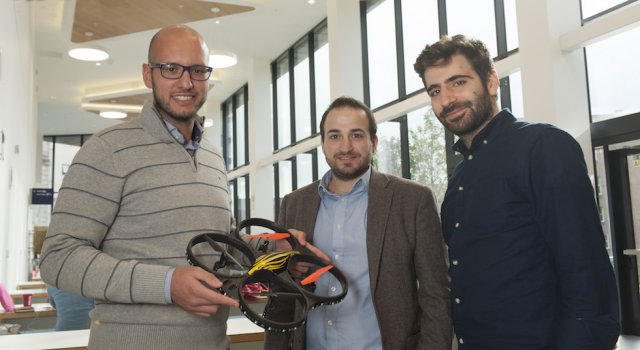 Strathclyde University has won Europe’s biggest space technology innovation competition for its work on a low-cost early detection system for UAVs. The winning project is a so-called ‘silent lookout’ system that uses low-cost sensors and satellite navigation technology for the early detection of UAVs.
Strathclyde University has won Europe’s biggest space technology innovation competition for its work on a low-cost early detection system for UAVs. The winning project is a so-called ‘silent lookout’ system that uses low-cost sensors and satellite navigation technology for the early detection of UAVs.
Dr Carmine Clemente, Domenico Gaglione and Christos Ilioudis from the Sensor Signal Processing and Security Labs at Strathclyde Space Institute, developed the idea with support from the Scottish Center of Excellence in Satellite Applications (SoXSA).
The team’s solution is a passive radar system using Global Navigation Satellite System (GNSS) signals for micro-UAV detection, classification and tracking. According to Strathclyde University, the Passive Bi-Static Radar (PBR) manipulates sources of electromagnetic energy to accomplish radar tasks including target detection, parameter estimation and recognition.
The ‘silent lookout’ system could be deployed as a perimeter around any large public venue with the sensors creating a detection arc at a distance that would allow authorities enough time to take appropriate action if an UAV were being used for nefarious purposes.
Mark Stevens, key account manager, Navigation & Ground Systems, Airbus Defense and Space said: “I’m delighted that the…Strathclyde team have achieved this well deserved recognition. Their technically innovative use of GNSS signals as part of a Passive Bi-Static Radar System potentially provides an exciting new method in the early detection of micro UAVs.”
Out of a field of over 500 entries from 17 countries, five UK finalists came home from the European Satellite Navigation Competition (ESNC) awards in Madrid with an award and the top prize of €10,000 to invest in their technology.
Dr Clemente said: It is incredible to have won first place, especially seeing the caliber of entries. The competition is an exciting opportunity for us to accelerate our idea to a market-ready application.
Source: The Engineer
